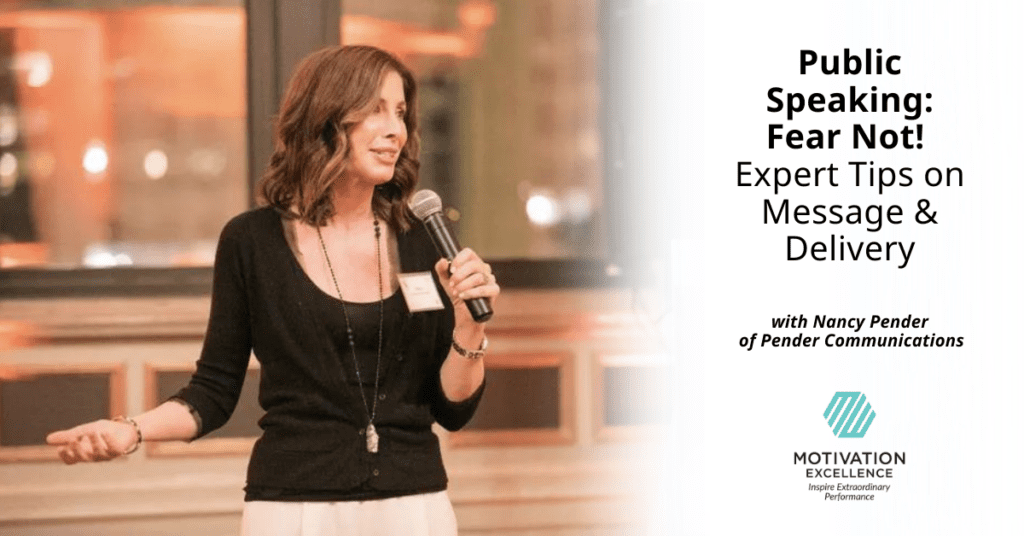Public speaking. Do those two simple words together make your stomach plunge and your throat tighten? It’s one of the most commonly reported “biggest fears.” Psycom states glossophobia affects up to 75% of the population! And even that other 25% still have some trepidation, if they’re at all human. 😊
Nancy Pender is no stranger to being in front of an audience. As a Peabody and Emmy-award-winning TV journalist, she was last an anchor and reporter in Chicago before segueing to a career helping professionals hone their communication skills to be more effective on the job. Pender Communications is an executive and media communications consulting company, specializing in a variety of skill sets including speech preparation, DIY sizzle reels and media interviews. As the founder, her aim is to help business professionals craft and deliver meaningful messaging, with the latter pulling a significant amount of focus.
“When I’m hired to help a client craft a speech or PowerPoint presentation, I also work with them on delivery skills. Words are important, but it’s how we deliver those words that has the most impact on an audience,” Pender says.
She obviously runs into a good number of clients who have a hate-hate relationship with the delivery part. For many of us, it’s due to past experiences that didn’t end well. Any of these situations feel painfully familiar?
- Being thrown into the spotlight with no prep time
- Technical difficulties took center stage
- No one listened, and instead kept right on talking to their friends
- Literally lost your notes and thus lost the audience
- Didn’t practice enough so had to rely on reading instead of engaging with the audience
Luckily there are ways to overcome many of those stumbling blocks. Depending on your environment and message, some or all of the following can be helpful:
- Practice, practice, practice – if you know your message really well, you can overcome losing your notes or having a teleprompter go down.
- Record your practices and look for: places to take a natural pause, whether your gestures are too much or too little, and the appropriate use of facial expressions.
- Bring visual aids or something else to grab attention, especially right off the top. Do you play a handheld instrument? If appropriate, 30 seconds on a trumpet will get all eyes on you!
- Find the supportive faces in the audience and use them like they’re your partner.
- Allow yourself to laugh off the hiccups, or at yourself, if needed.
Pender has her own list of must-dos to help create a meaningful and memorable presentation, whether the audience is a boardroom of 12 or a ballroom of 200.
Even if you do all the “right things” leading up to a public speaking event, recognize you’ll still have nerves. Pender says they can actually make you perform better.
“Contrary to public opinion, presentation jitters can be a good thing. When used effectively, they help us focus better, energize our delivery, and prompt us to practice more, which reduces anxiety. The goal isn’t to eliminate the butterflies but to get them to fly in formation. Harness the energy to your advantage.”
Mayo Clinic has an article that walks people through some psychological exercises as well, including breathing techniques and visualization. Pender says making it about what the audience needs, rather than your own fears, can also help.
“Instead of viewing a speaking engagement with dread, reframe it as an opportunity to improve the lives or careers of others. You have innovative ideas that need to be heard. The most effective speakers are those who are able to focus more on the needs of their audience and less on themselves. Make that sentence your mantra and you’ll be well on your way to a more successful speaking scenario!”
There, now do the words “Public Speaking” sound a little less scary? It’s definitely a great skill to have, whether you’re pitching to a prospective client, raising funds for a charity at a gala, or coaching middle-schoolers basketball. And, chances are, you’re going to have to do it every so often no matter what you do for a living, so embrace the experience and harness those butterflies!




